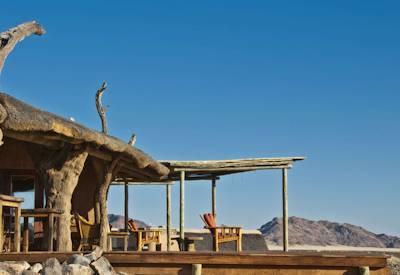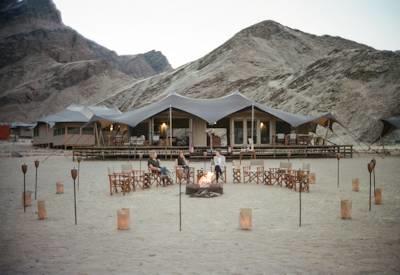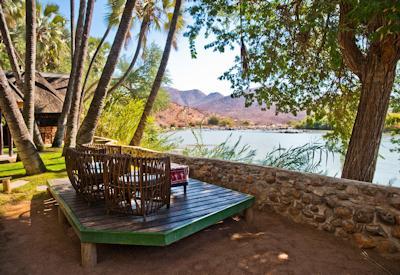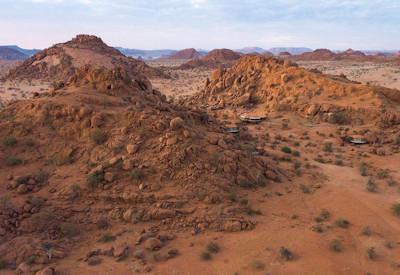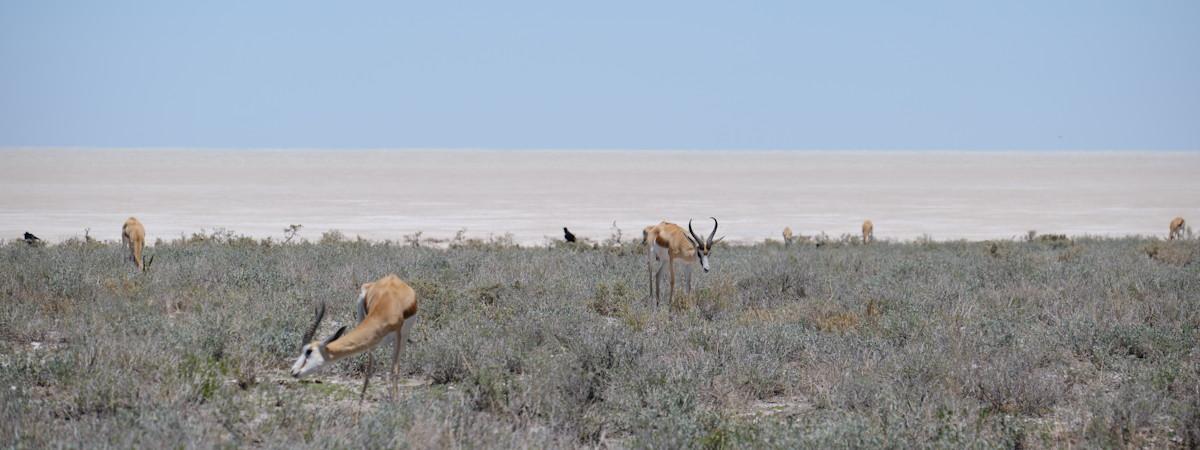
Etosha National Park
Namibia's Etosha National Park is the most popular wildlife destination in the country by far. Excellent sightings in wildlife and birdlife can be expected year-round, and with the massive Etosha Pan as a backdrop, wildlife photographs turn out amazing.
Etosha is ideally paired with the Namib Desert and Swakopmund or even a safari to Botswana and Victoria Falls.
Etosha offers basic accommodation within the park, but as a better option, private reserves just outside the park are better suited with more luxurious offerings available.
Etosha National Park Facts
- Size: 22 270 km²
- When to visit the park: May - September (game viewing), November - March (bird watching)
- Rainfall: approx. 358mm per annum during the rainy season (January - March)
- Altitude: 1000m above sea level
- Location: Northern Namibia
- Accommodation: Etosha Lodges
Information On Etosha National Park
The Etosha National Park is a major wildlife sanctuary and is one of Southern Africa's finest and most important Game Reserves. Meaning a 'great white place' is dominated by a massive silvery-white hollow mineral pan, the Etosha Pan and surrounded by grasslands and bush. The pan is part of the Kalahari Basin, the floor of which was formed around 1000 million years ago and covers around 25% of the National Park. It is a large dusty depression of salt and dusty clay that fills only if the rains are heavy and even then only holds water for a short time. The pan attracts large concentrations of wildlife and an amazing array of birdlife.
A San legend about the Etosha Pan formation tells of how a village was raided and everyone but the women slaughtered. One woman was so upset about her family's death she cried until her tears formed a massive lake. When the lake dried up, nothing was left apart from a huge white pan. The park is open to visitors throughout the year and is one of the first places on any itinerary designed for a holiday in Namibia.
The area is home to Black and White rhino, elephant, lion, leopard, spotted and brown hyena, bat-eared fox, cheetah, both Burchell's and Hartmann's zebra, the endemic black-faced impala, blue wildebeest, the endemic Damara dik-dik, eland, gemsbok, giraffe, kudu, red hartebeest, dainty springbok and yellow-tailed mongoose.
Nearly 400 bird species have been recorded, including eagles, hawks, other raptors, black korhaans, ostrich, blue cranes, flamingos and pelicans, incredible clouds of quelea and flocks of doves and Namaqua sandgrouse.
Where is Etosha National Park located?
Etosha National Park is located in Namibia's far northern region and is easily accessible from Windhoek within a days drive.
- Etosha National Park to Windhoek = 415km
- Etosha National Park to Sesriem = 717km
- Etosha National Park to Swakopmund = 492km
- Etosha National Park to Opuwo = 439km
- Etosha National Park to Rundu = 415km
To see the exact location of Etosha by means of a Google map, click the following link: Google Map - Etosha National Park
Best Time to Visit Etosha National Park?
Year-round is the simple answer; Winter is obviously the best time as the days are cooler and there is little to no rainfall. The summer months are hot and wet, and this results in the wildlife going deeper into the surrounding bushveld. Summer is not bad, but winter is definitely better for wildlife sightings and photography.
We at Uyaphi do prefer the winter/drier months as the wildlife is more visible and easier to find.
Main Attractions Of Etosha National Park
- Wildlife congregate at waterholes
- in summer, extensive flocks of flamingos, pelicans and excellent birdlife
- Mirages formed by the heat reflecting off the salt pans
- Lions and cheetahs
- rhino sightings
- Elephants dusted in white powder
- A fantastic self-drive safari route
- Atlantic Villa Guesthouse
Atlantic Villa Guesthouse, located in the peaceful Vogelstrand area of Swakopmund, offers a coastal retreat just 6 km from the town centre. With stunning views of the Atlantic Ocean, it's a tranquil and luxurious escape.
With its enviable location just a short stroll from the ocean's edge, Atlantic Villa combines convenience with the unparalleled beauty of Swakopmund's coastline, making it the perfect haven for those seeking relaxation and elegance by the sea.
- Kulala Desert Lodge
Kulala Desert Lodge, located in the stunning Namib Naukluft Park on the 37,000-hectare Kulala Wilderness Reserve, is the closest lodge to Sossusvlei's iconic red dunes. It's the perfect base to explore Namibia's extraordinary landscapes and capture early-morning shots of Deadvlei's unique beauty.
This desert safari lodge features 23 beautifully designed thatched and canvas suites, each with en-suite bathrooms, private star beds for unforgettable nights under the desert sky, and spacious verandas to enjoy stunning views. The luxurious yet authentic experience is truly remarkable.
- Hoanib Valley Camp
Hoanib Valley Camp, set in the stunning landscapes of Kaokoland/Damaraland, offers a unique experience amidst Namibia's incredible desert wildlife. Spot desert lions, elephants, rhinos, giraffes, hyenas, oryx, and mountain zebras—all thriving in this dramatic desert.
The Hoanib River Valley in Namibia's Damaraland is breathtaking. Surrounded by rugged mountains, it offers stunning scenery and a haven for unique desert wildlife. Staying here is an unforgettable safari adventure into Namibia's wild and remote beauty.
- Omarunga Lodge
Epupa Falls is, without a doubt, one of the most breathtaking highlights of northern Damaraland in Namibia. Nestled along the tranquil banks of the Kunene River lies the enchanting Omarunga Lodge, a serene retreat offering an unparalleled connection to nature.
What makes this location even more extraordinary is its proximity to the stunning Epupa Falls. Just a leisurely 2-minute stroll from the lodge, you’ll find yourself standing above the cascading waters, mesmerised by their beauty.
- Onduli Ridge
Set in the rugged beauty of Damaraland, Onduli Ridge is a serene retreat for travellers seeking both comfort and adventure. The lodge offers stunning views of Namibia's granite outcrops and desert plains, creating a perfect connection to nature.
At Onduli Ridge, the experience is as unique as the surroundings. Guests have the opportunity to explore the enchanting terrain on guided walks or game drives, with the chance to encounter the elusive desert-adapted elephants.
- The Pearls Beach Pods
The Pearls Beach Pods stand on Namibia's desert coastline near Swakopmund as an attractive destination for travellers. The pod accommodations at The Pearls Beach Pods deliver both comfortable relaxation and exciting outdoor adventures to travellers who want peaceful accommodations while discovering Namibian natural attractions.
A visit to The Pearls Beach Pods will deliver an unforgettable encounter for every occasion. The modern pods at The Pearls Beach Pods provide the ideal retreat for families on safari, couples on honeymoon, or anyone seeking beach relaxation.


